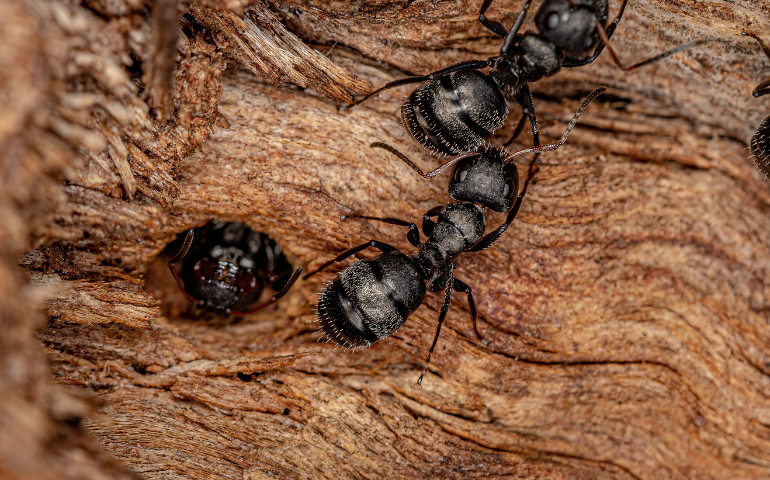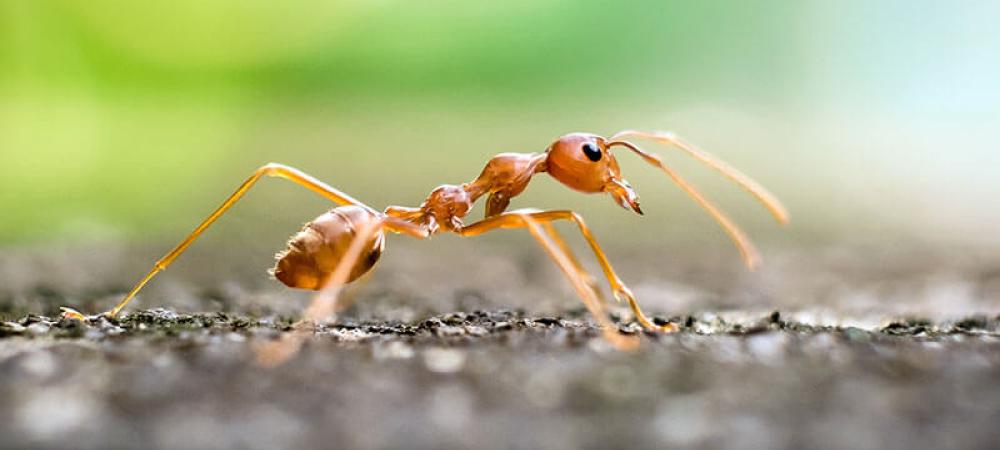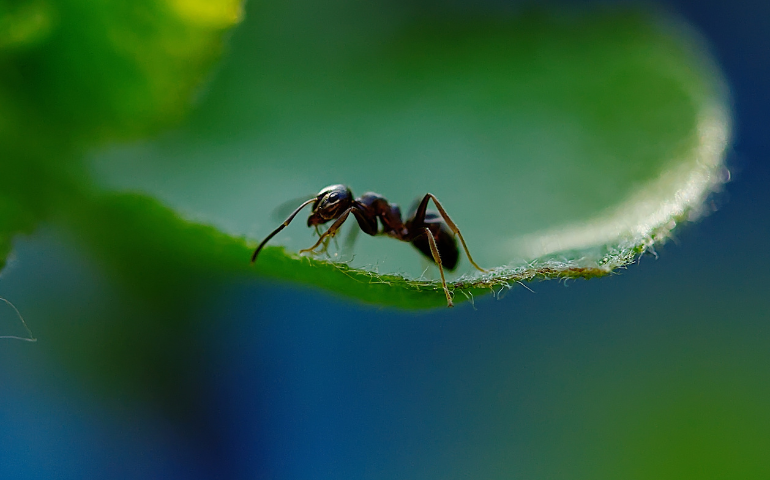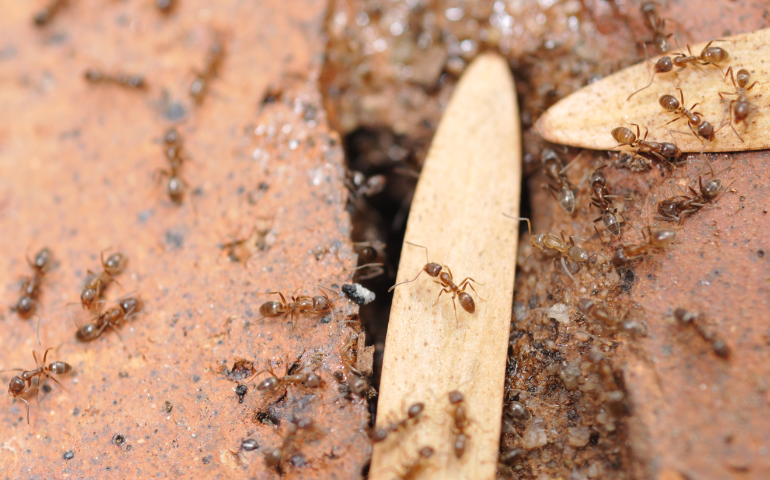Ants
Ants are social insects that belong to the family Formicidae and are part of the order Hymenoptera, which also includes bees and wasps. They are highly diverse, with over 12,000 known species identified worldwide. Ants play a crucial role in ecosystems as scavengers, predators, and seed dispersers.
Key characteristics and behaviors of ants:
Physical Characteristics:
- Ants have a distinct body structure consisting of three main parts: head, thorax, and abdomen.
- They typically have six legs, antennae, and a pair of elbowed antennae.
- Ants vary in size, color, and shape depending on the species, with sizes ranging from a few millimeters to several centimeters in length.
Social Structure:
- Ants are eusocial insects, meaning they live in organized colonies with a division of labor among different castes.
- Ant colonies are typically composed of a queen, workers, and sometimes soldiers or reproductive males.
- The queen is responsible for laying eggs and maintaining the colony's reproductive cycle, while workers perform tasks such as foraging, caring for the young, and defending the colony.
Communication:
- Ants communicate with each other using a variety of methods, including chemical signals (pheromones), tactile cues, and auditory signals.
- Pheromones play a crucial role in coordinating colony activities, such as foraging, mating, and defense.
Foraging Behavior:
- Ants are omnivorous scavengers, feeding on a wide range of organic matter, including dead insects, plant material, and sugary substances.
- They use chemical trails laid by foragers to navigate between food sources and the colony, allowing them to efficiently exploit resources in their environment.
Ecological Importance:
- Ants play a vital role in ecosystem dynamics, functioning as important predators, scavengers, and decomposers.
- They help regulate populations of other insects, control pest species, and facilitate nutrient cycling through their activities.
Impact on Humans:
- While most ants are beneficial in natural environments, some species can become pests in urban areas, invading homes, gardens, and agricultural fields.
- Ants may cause nuisance by foraging for food indoors, damaging crops, and sometimes even inflicting painful stings.
What Kinds of Ants Are There?

Carpenter ants are large, black or red ants known for their ability to damage wood structures by hollowing out galleries for their nests. Unlike termites, carpenter ants do not eat wood; instead, they tunnel through it to create smooth pathways for their colonies. They are typically found in areas with decaying or damp wood, such as around windows, door frames, and in attics or basements. Signs of carpenter ant activity include piles of sawdust-like material called frass, rustling noises inside walls, and the presence of winged ants. Because they can cause significant structural damage over time, carpenter ant infestations should be addressed promptly by a pest control professional.

Fire ants are small, reddish-brown ants known for their aggressive behavior and painful stings. These ants typically build large mounds in sunny areas like lawns, gardens, and along sidewalks. Fire ants are highly territorial and will swarm quickly if their nest is disturbed, delivering multiple stings that can cause intense pain, itching, and even allergic reactions in some individuals. They often invade homes in search of food and moisture, making them a common pest in kitchens and bathrooms. Due to their aggressive nature and potential health risks, professional treatment is often necessary to eliminate fire ant infestations.

Sugar ants, also known as pavement ants or odorous ants depending on the region, are small, black or brown ants that are attracted to sugary and sweet substances. They are often found in kitchens, pantries, and other areas where food is stored. Sugar ants can easily enter homes through tiny cracks and gaps, following trails they create to their food sources. While they don’t pose serious health risks, their presence can be a nuisance as they quickly multiply and contaminate food supplies. Keeping surfaces clean and food sealed can help prevent sugar ant invasions.

Odorous house ants are small, dark brown to black ants that give off a rotten, coconut-like smell when crushed, which is how they get their name. These ants are attracted to both sweet and greasy foods and can easily invade homes through cracks and crevices. Odorous house ants typically build nests indoors around moisture-rich areas like under sinks, inside walls, and beneath flooring. Although they don’t cause structural damage, their strong odor and persistent behavior can make them a bothersome pest. They can be difficult to eliminate, often requiring professional pest control services.

Argentine ants are light to dark brown and are known for forming large colonies that can number in the thousands. They are highly invasive and tend to displace other ant species. Argentine ants often enter homes in search of food, particularly sweet and greasy substances, and they can create strong trails throughout buildings. Their large numbers and ability to quickly relocate their colonies make them difficult to control.
How To Get Rid Of Ants: Effective Strategies for Ant Control
While ants play essential roles in ecosystems, their presence within human spaces can lead to inconvenience and potential problems. Managing ant infestations requires a combination of preventive measures and targeted strategies. Here’s a guide on how to effectively get rid of ants:
1. Identify the Ant Species:
Different ant species may require different treatment approaches. Identify the specific type of ant infesting your space to tailor your control methods accordingly.
2. Maintain Cleanliness:
Ants are attracted to food sources. Keep your living spaces clean by promptly cleaning up crumbs, spills, and food residues. Store food in airtight containers and regularly empty trash bins.
3. Eliminate Entry Points:
Seal cracks, gaps, and openings where ants can enter. Check windows, doors, and other potential entry points. Use caulk or weatherstripping to close gaps effectively.
4. Remove Attractants:
Ants are drawn to sweet and sugary substances. Wipe down surfaces, especially in the kitchen, to eliminate scent trails. Consider using vinegar or lemon juice as natural deterrents.
5. Diatomaceous Earth:
Sprinkle food-grade diatomaceous earth along ant trails and entry points. This natural substance damages the ants’ exoskeleton, leading to their demise.
6. Borax and Sugar Solution:
Create a mixture of borax and powdered sugar. Place small amounts near ant trails. The ants will carry the bait back to the colony, affecting the entire population.
7. Cinnamon and Peppermint Oils:
Ants dislike strong smells like cinnamon and peppermint. Mix essential oils with water and spray around entry points or areas with ant activity.
8. Boiling Water:
For outdoor ant nests, pouring boiling water directly into the nest can be an effective and environmentally friendly method to eliminate colonies.
9. Professional Pest Control:
In cases of persistent or severe infestations, seeking professional pest control services is advisable. At Alta Pest Control, we can identify the specific ant species and implement targeted strategies for efficient eradication.
10. Ant Baits:
Commercial ant baits contain attractive food mixed with insecticides. Ants carry the bait back to the colony, effectively controlling the population.
11. Seek Professional Assistance:
Professional pest control services offer comprehensive solutions for challenging ant infestations. Experienced technicians can assess the extent of the problem and implement safe, effective, and environmentally friendly measures.
Implementing a combination of these strategies is key to successful ant control. Preventive measures, coupled with targeted treatments, can help maintain a pest-free environment. For personalized and effective ant management, consider Alta Pest Control, where our expertise meets a commitment to customer satisfaction.
